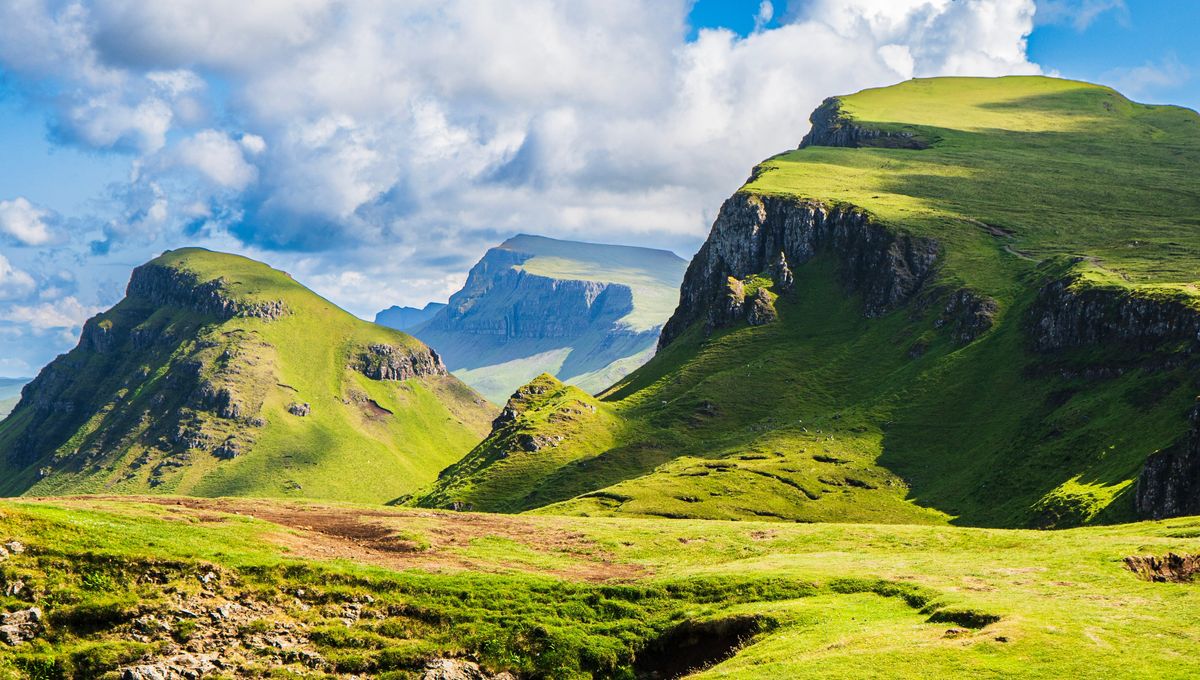
Stone tools found on the Isle of Skye, Scotland, are of a style that flourished 12,000 years ago, when the Earth was plunged into a brief period of extreme cooling called the Younger Dryas, after apparently escaping the last glacial era. The location was thought to be far too close to the poles to have supported humans at that time, making the finding a paradox. If the assessment is correct, however, the discovery proves our ancestors were much hardier and more ingenious than we have given them credit for being.
The Isle of Skye, off the west coast of northern Scotland, has been a rich source of fossils from the dinosaur era, when the world was a great deal warmer than today. It’s not the sort of place we’d expect to find evidence for humans before the Holocene, however. After all, part of it was covered in thick ice during the last Ice Age. Conditions would have briefly become more attractive after the ice retreated, but then the Younger Dryas event was thought to make the location uninhabitable again for another thousand years or so.
Consequently, stone tools found on Skye were assumed to have come from other times, or to be the relics of brief visits by brave scouts. Newly discovered tools call this into question, based on their resemblance to those only known from Younger Dryas times.
Tools with a distinctive style known as Ahrensburgian have only been found in northern Germany and surrounding areas, including southeast England. When these tools can be dated, they are consistently from 12,900 to 11,700 years ago, closely matching the timing of the Younger Dryas. This is a period where the world cooled dramatically, before warming again.
The causes of the Younger Dryas remain passionately debated, but no one disputes that Europe got very cold at the time, around 10° C (18° F) colder than before and after the event. The Ahrensburgian culture appears to have been a response, allowing people to live in an area where tundra had replaced forests and reindeer became the most important prey.
It’s likely the Ahrensburgian tool-makers roamed widely over what is now the North Sea, which would have been dry land at the time. However, even for cold-adapted people, there must be a limit. Until recently, that limit was thought to run through central England – northern Scotland seems highly implausible.
Yet what appear to be Ahrensburgian-type tools have now been found on several islands off northern Scotland, including the Orkneys. The first detailed study of these tools and their context focuses on those found at South Cuidrach on the Isle of Skye, along with stone circles in what is now the intertidal zone at Sconser, central Skye. The authors of a paper about the sites say these locations are the most northerly Late Upper Palaeolithic (LUP) sites in Britain with evidence of habitation, although the isolated tools from the Orkneys suggest people may have gone further still.
During the Younger Dryas, mainland western Scotland was covered by an ice cap. A smaller cap may have covered parts of Skye, and conditions there must have been exceptionally hostile. It’s not for nothing that the authors called their paper, “At the far end of everything:…”
The stone tools can’t be radiocarbon dated, and subsequent disruption of the site means we can’t tell their age from the soil layer in which they were found. Consequently, it’s possible Skye was only inhabited after the Younger Dryas had passed. If so, the residents apparently continued to make tools in a style that had become passe elsewhere in Europe, which would raise almost as many questions as their presence during the deep cold.
Whatever motivated these Skye-dwellers, they appear to have picked a good location at South Cuidrach, climate aside. Although located on the island’s north coast, the site has access to both the coast and a local river, and resources of ochre – much in demand at the time – and the mudstone from which the tools were made.
The oldest confirmed sign of human habitation in Scotland where dating is possible is a little over 10,000 years old, and lies considerably further south. A few artifacts that might be pre-Holocene were found on Skye decades ago but were considered likely relics of brief visits. In recent years, evidence has popped up from many parts of Scotland of several cultures occupying Scotland in waves during the warm conditions between the end of the Ice Age and the Younger Dryas. If those people stayed as conditions cooled, however, it is unclear how they came to adopt the Ahrensburgian style.
The study is published in the Journal of Quaternary Science.
[H/T: Phys.org]
Source Link: Ancient Humans May Have Survived In Isolated Northern Scotland During Extreme Cooling 12,000 Years Ago